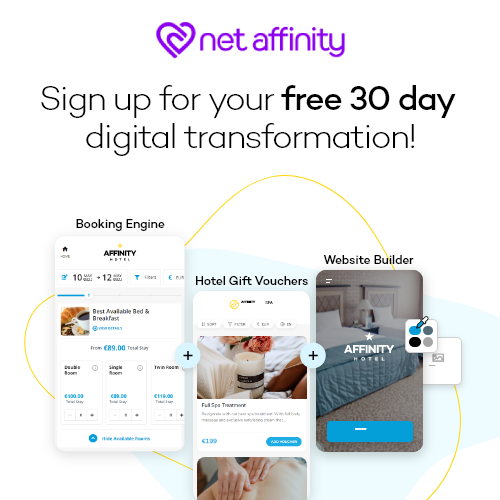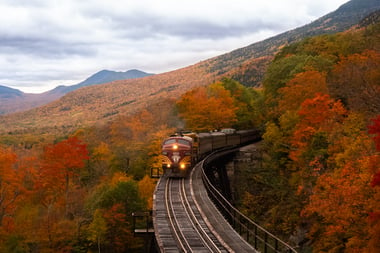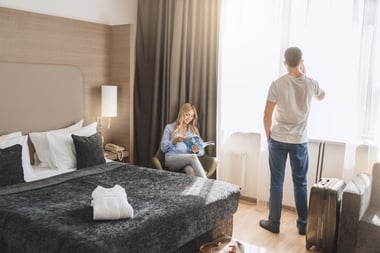In the travel industry news this week, we were reading about a diverse range of topics that got us thinking about the challenges faced by independent hotels or SMEs in the hotel and guesthouse market. It can be difficult to compete with large brands and chains, as well as OTAs.
Whether it’s getting your digital marketing right with limited experience and resources or offsetting OTA commission and the effects of the sharing economy on your business.
These multinationals evidently have big budgets and resources for collecting mass data in which they use to finetune their websites, therefore if they’re doing it, so should you!
Drawing on OTA and Airbnb principles, you must optimise your hotel’s customer journey so it’s as simple and hassle-free as possible for the user.
Our article about understanding your guests’ path to purchase will help you to reveal where and when users are landing on your site, their behavior around browsing and booking, which will, in turn, drive your direct bookings.
Airbnb and instant booking: A recipe for market domination
The company has shifted to a focus on instantly bookable inventory and this shift could position Airbnb at the top of the market.
Though the pace at which units are being added to Airbnb has slowed, the growth in instantly bookable units has increased this year by more than 76.1%, from 923,990 units in January of 2017 to over 1.6 million units active instantly bookable listings today.
Instant Book is a user-friendly process because travelers can skip the chit-chat with the property host and have a room, or a property, instantly ready for their trip. This will encourage more people to use Airbnb to quickly secure a place to stay. Airbnb will begin operating more like an OTA (like Booking.com or Expedia where you can immediately book online).
Guest Post: Why travel needs ‘marketing as a service’
Travel marketing is a unique challenge. High acquisition costs, a lengthy purchase cycle and low rebooking rates all make tourism a tough nut for marketers to crack.
This is especially the case for SME tour operators who lack the resources, time, and expertise to keep pace with a constantly shifting landscape and intense competition from larger brands.
Marketers at larger, more sophisticated brands are familiar with the ‘marketing stack’ – a visualisation of how tech, processes and tactics fit together to create measurable, predictable outcomes:
Building and implementing a marketing stack is feasible for bigger firms with the resources to train and retain in-house talent and commission services from external agencies.
But smaller businesses have a very different experience. With limited in-house expertise and tight budgets, their marketing efforts tend to be more ad-hoc. It’s often less a marketing strategy, and more a case of throwing spaghetti at the wall and hoping some of it sticks.
As a result there’s a large segment of SME tourism businesses frittering their marketing budgets on pointless SEO campaigns, poorly-optimised PPC, and haphazard content marketing all further undermined by limited analytics and poor ROI attribution.
Travel Behavior: The Path To Purchase
The traceable steps a user will take before eventually deciding to book a room in your hotel is known as attribution. Sometimes it can be a simple path, but other times it can be a complex and convoluted path, that takes place over days, weeks or even months before the prospect converts.
Travel booking behaviour, can be more complex than the average online sale of a book or item of clothing. Naturally, the bigger the price tag, the more time a person will need to research and reflect on the purchase before committing to parting with their money, as is true with booking a hotel stay.
The online hotel space is becoming increasingly consumer-centric – as there is no linear path to purchase, the consumer must be given what they want at each touchpoint in order to be at the front of their mind once they’re ready to buy.



